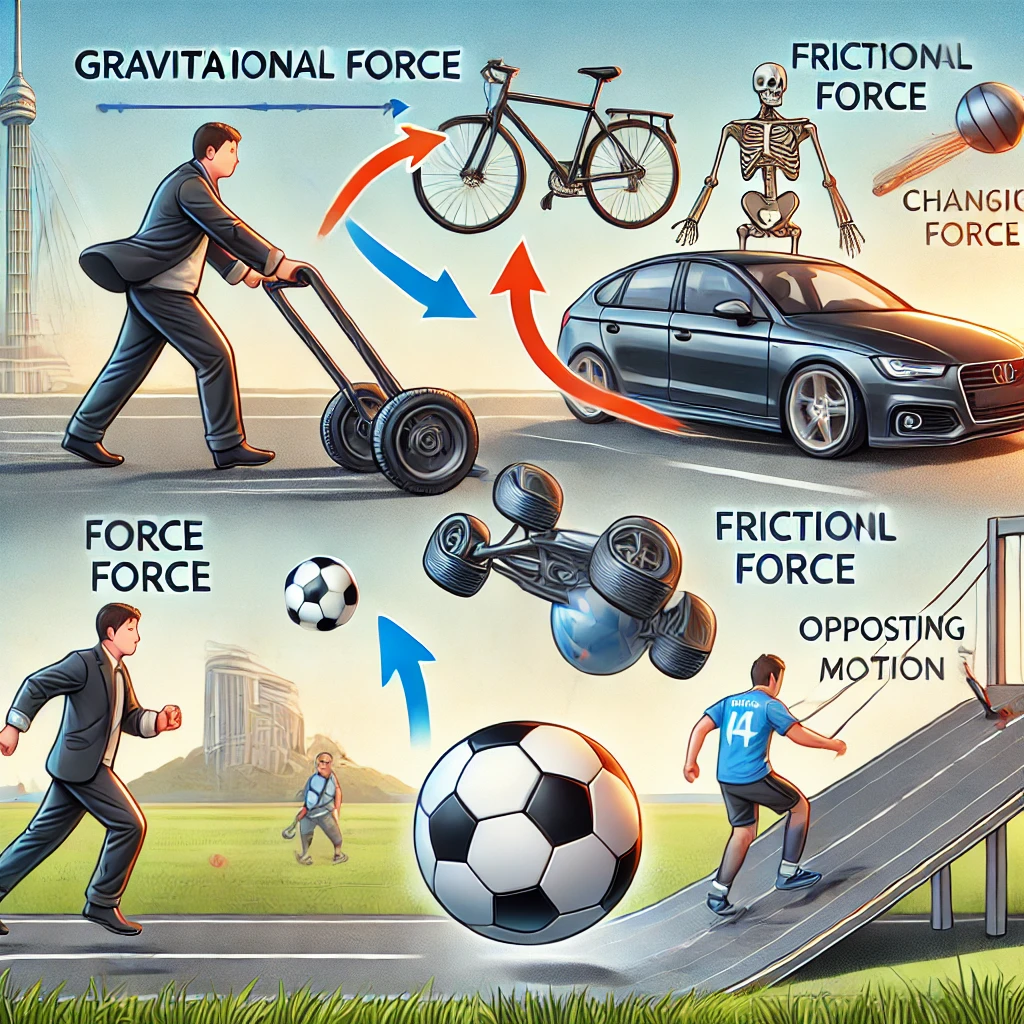Guidelines:
- All questions are compulsory.
- Read the instructions for each section carefully.
- Write answers clearly and legibly.
Section A: Very Short Answer Questions (1 Mark Each)
- Define force.
- Name two effects of force on an object.
- What is the unit of force?
- State one example of gravitational force.
- What happens when two like magnetic poles are brought close to each other?
Section B: Fill in the Blanks (1 Mark Each)
- The force that opposes the motion of an object is called __________.
- Gravitational force pulls objects towards the __________.
- __________ force helps objects float in fluids.
- Friction converts mechanical energy into __________.
- Opposite charges __________ each other.
Section C: Multiple Choice Questions (1 Mark Each)
- Which of the following is NOT an effect of force?
a) Moving an object
b) Stopping an object
c) Destroying matter
d) Changing the direction of an object
- Which force is responsible for keeping planets in orbit?
a) Frictional force
b) Gravitational force
c) Magnetic force
d) Buoyant force
- Which of these reduces friction?
a) Adding grease
b) Increasing surface roughness
c) Using brakes
d) Increasing the weight of an object
- Electrostatic force is caused by:
a) Friction between surfaces
b) Magnetic poles
c) Interaction of electric charges
d) Weight of an object
- Buoyant force acts in which direction?
a) Downward
b) Upward
c) Sideways
d) All directions
Section D: Short Answer Questions (2 Marks Each)
- What is frictional force? Provide one example.
- Explain how magnetic force works between two magnets.
- What are the advantages of friction? Name two.
- How does buoyant force help objects float?
- Describe one disadvantage of friction.
Section E: Long Answer Questions (5 Marks Each)
- Describe five effects of force with examples.
- Differentiate between gravitational and magnetic forces.
- Explain how electrostatic force works with an example. Include the concept of attraction and repulsion.
- Discuss the role of friction in our daily lives, highlighting its advantages and disadvantages.
- What is buoyant force? Explain the conditions under which an object floats, sinks, or remains suspended in a fluid.
Section F: Match the Following (1 Mark Each)
- Frictional force a) Helps objects float
- Gravitational force b) Acts between charged objects
- Magnetic force c) Opposes motion
- Buoyant force d) Pulls objects towards Earth
- Electrostatic force e) Works between magnets
Section H: True or False (1 Mark Each)
- Friction always reduces efficiency. (True/False)
- Buoyant force only acts on solid objects. (True/False)
Answers:
- A push or pull acting on an object.
- Moving a stationary object, changing the shape of an object.
- Newton (N).
- An apple falling from a tree.
- They repel each other.
- Frictional force
- Earth
- Buoyant
- Heat
- Attract
- c) Destroying matter
- b) Gravitational force
- a) Adding grease
- c) Interaction of electric charges
- b) Upward
- Frictional force resists the relative motion between two surfaces in contact. Example: Brakes on a car.
- Magnetic force causes like poles to repel and opposite poles to attract.
- Friction provides grip for walking and allows writing on surfaces.
- Buoyant force acts upwards, countering the weight of an object to make it float.
- Friction causes wear and tear, like erosion of shoe soles.
- Force can move stationary objects (e.g., pushing a car), stop moving objects (e.g., brakes), change speed (e.g., pushing a swing), change direction (e.g., kicking a ball), or change shape (e.g., squeezing a soft ball).
- Gravitational force pulls objects towards Earth, while magnetic force attracts or repels based on magnetic poles. Gravitational force acts on all objects; magnetic force acts on specific materials.
- Electrostatic force occurs when objects become charged. Example: A charged comb attracting paper due to opposite charges. Like charges repel; opposite charges attract.
- Friction allows walking and writing but also causes wear and energy loss. Its dual role makes it both essential and problematic.
- Buoyant force pushes up against an object’s weight. Objects float if buoyant force > weight, sink if weight > buoyant force, and remain suspended if forces are equal.
- c) Opposes motion
- d) Pulls objects towards Earth
- e) Works between magnets
- a) Helps objects float
- b) Acts between charged objects
- True
- False


